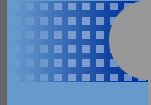Waffle Rubber:
This
type of padding is still being used today but often improperly. The waffle part of the padding gives it a
thickness that is mostly air, and as a result, any of this type of padding rated less than 90 ounces is still too soft for
today's plastic backed carpets. Also, despite claims to the contrary, the rubber used to make these paddings is held together
with clay type binders that break down with use.
Prime
Urethane: This inexpensive padding
compresses quickly, but has a high insulation value and can withstand moisture and heat.
This type of
padding is made from urethane foam and is available in different densities and thickness. Generally this type of pad is referred
to a "prime foam", but, regardless of the thickness, is not recommended for heavy traffic of any kind. All that air under
the carpet just causes the carpet to move up and down so much that the backing soon breaks down. Some enhancements have been
tried like loading the foam with binders to make it heavier, or compressing the cells. However, both of these methods leaves
a foam that still does not support the carpet like other types of padding.
Rebond: The most common residential carpet padding, rebond is made from recycled foam material. Rebond carpet padding
is a good economical choice and is available in a wide range of thickness and density.
A quick update about rebond pad. The price of rebond
goes up and down depending on the avialability of foam scrap. It is going to be difficult to predict what the price will be
in just a few months. There is a shortage of scrap mostly due to production
of furniture being moved to China. China
also buys all the scrap foam it can. The higher rebond goes up in price, the more affordable froth foam (the best pad out
there) will become.
This type
of padding is used most often by the floorcovering industry. It is made from of scraps of the high density foams used in furniture
making that are bonded together. Rebond padding comes in various thicknesses and densities . The density is rated at so many
pounds per cubic foot. For example, a 5 lb rebond pad would weigh 5lb per cubic foot. The carpet cushion council recommends
a pad of at least 5lbs and 3/8 inch thickness for light traffic (your living room), and a pad of 6.5 lbs and 3/8 inch for
heavy traffic (hallways). These are minimum guidelines, and I suggest that a 7 to 7.5 lb pad for longer wear. Also, the Carpet
and Rug Institute (CRI) recommends that for residential use, the pad shall not exceed 7/16ths inch. I am sure this is because
proper alignment with the tackstrip is best for a nicer looking finished product, and there is a less of a chance for too
much up and down movement in the carpet. This could contribute to wrinkles
in the carpet. As a special note: ask your dealer to show you "virgin" rebond pad. He will look at you funny, but it is out
there, and it is the best rebond you can buy.
For
the more luxury and long wear one could use 100 ounce 19lb density slab rubber padding. Unlike the waffle rubber padding,
slab rubber does not contain big ripples of air. This pad feels much like 7lb rebond, but will resist furniture indentation
and crushing for a much longer period of time. I recommend this pad for the highest of traffic areas.
Felt Fiber: Recommended for use with Berber carpets and in low
traffic areas, fiber carpet pads may not be a good choice for people with allergies becaue they have a high content of natural
materials that may be an irritant.
These pads are used when one wants to limit the movement in a piece of carpet. This pad can be
made from jute, or hair mixed with jute, or synthetic fiber, or recycled textile fiber. Most often these pads are used under
area rugs, under commercial carpets, and under some berber carpets. The key here is density. Spun nylon is best. Stay with
at least 7.5 lbs per cubic ft. density on the synthetic fiber, and 12 lb density on the jute pads. Thickness should be between
3/8 and 7/16 inch. Total weight should be 40 ounces per square yard.
Only
some berber carpets require special padding. If your carpet dealer normally sells a light weight pad as his regular padding,
then you WILL need a special pad. The general rule is the bigger the loop in the berber the firmer the padding should be.
Also, as noted above, rebond should be avoided under berber carpets.
Frothed Foam
Frothed
Polyurethane: A bit on the high side in terms of price, frothed polyurethane resembles memory foam in
its ability to bounce back from compression. Frothed polyurethane can also be used in high moisture and heat environments.
The
ultimate padding on the market is Frothed Foam. This pad is a super dense urethane and is made 7/16ths inch thick. It is extremely
durable. This pad has virtually no VOCs (off gassing), can be used under all carpets, will reduce furniture indentations,
and prolong the life of your carpet better than any rebond, fiber, waffle rubber or prime foam. It cost about the same as
a good slab rubber padding and will last longer.
There
are certain carpets that require unique pad usage. One of those is the woven carpet. These carpets must be installed over
a extra heavy super dense fiber pad or , in some cases, a heavy flat frothed foam. This frothed foam also works well with
radiant heated floors.
Also, If you
have a carpet that is being used in a commercial installation, check to see if this type of carpet is available with its own
self-attached backing. This backing is built by the mill to optimize the performance of its carpet.

